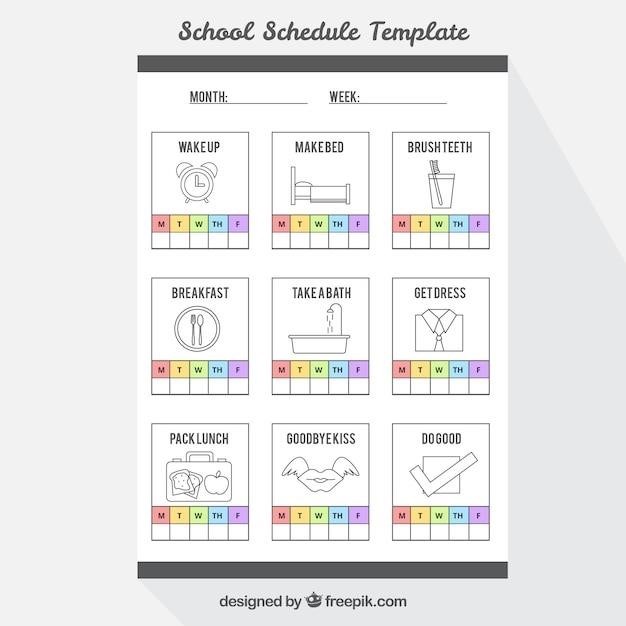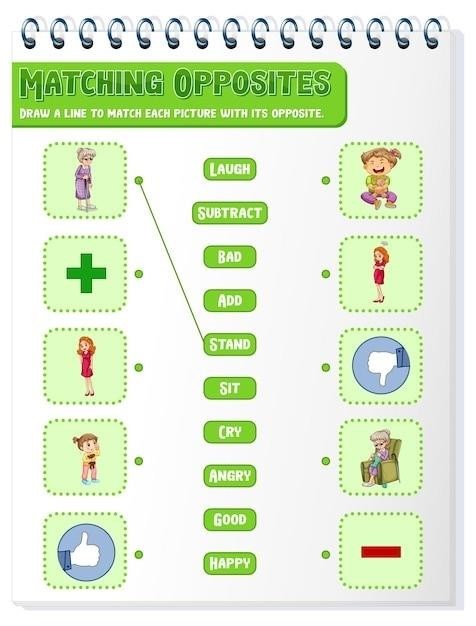Ethos, Pathos, and Logos⁚ A Comprehensive Overview
This overview explores the three pillars of persuasion⁚ ethos (credibility), pathos (emotion), and logos (logic)․ Understanding these appeals is crucial for crafting persuasive arguments and analyzing effective communication․ Worksheets focusing on these elements aid in developing critical thinking and communication skills․
Understanding the Three Pillars of Persuasion
Effective persuasion relies on a balanced approach utilizing ethos, pathos, and logos․ Ethos centers on establishing the speaker’s credibility and trustworthiness․ A strong ethos convinces the audience that the speaker is knowledgeable and reliable, making their arguments more believable․ Pathos engages the audience’s emotions, fostering empathy and connection․ By appealing to shared values and feelings, pathos creates a powerful persuasive impact․ Logos, on the other hand, focuses on reason and logic․ Presenting clear, well-supported arguments and evidence strengthens the persuasiveness of the message․ Worksheets incorporating these elements help learners analyze and apply these rhetorical strategies in their own communication․
Ethos⁚ Establishing Credibility and Authority
Ethos, the appeal to credibility, is fundamental to persuasive communication․ It involves demonstrating expertise, trustworthiness, and good moral character․ In a worksheet context, this might involve analyzing how a speaker’s background, qualifications, or reputation contribute to their persuasiveness․ For example, a worksheet could present excerpts from speeches or advertisements, asking students to identify elements that build ethos․ These elements might include citing credible sources, using precise language, or showcasing relevant experience․ A strong ethos builds confidence in the speaker’s message, making the audience more receptive to their arguments․ Successfully identifying and utilizing ethos enhances the overall effectiveness of persuasive communication․
Pathos⁚ Evoking Emotion and Empathy
Pathos, the appeal to emotion, is a powerful tool in persuasion․ Effective use of pathos connects with the audience on a personal level, fostering empathy and understanding․ A worksheet focusing on pathos might present examples of persuasive texts employing emotional appeals, such as vivid imagery, storytelling, or emotionally charged language․ Students would analyze how these techniques evoke specific emotions – sadness, joy, anger, fear – and how these emotions influence the audience’s reception of the message․ Identifying the intended emotional response and analyzing the techniques used to achieve it are key components of understanding pathos․ The ability to recognize and utilize pathos effectively is crucial for crafting compelling and memorable persuasive arguments․ Worksheets can help students develop this skill by providing opportunities for analysis and practice․
Logos⁚ Utilizing Logic and Reason
Logos, the appeal to logic and reason, forms a crucial element of effective persuasion․ A worksheet designed to explore logos might present arguments built on facts, statistics, and logical reasoning․ Students would analyze the structure of these arguments, identifying premises, conclusions, and the logical connections between them․ This involves evaluating the validity and soundness of the reasoning employed․ Understanding logical fallacies – errors in reasoning – is also critical․ A worksheet could include examples of fallacious arguments, requiring students to identify the flaws in the logic․ By analyzing both strong and weak arguments based on logos, students develop their capacity to construct well-reasoned, persuasive arguments themselves․ The ability to discern logical reasoning from emotional manipulation is a valuable skill fostered through such exercises․
Finding and Utilizing Ethos, Pathos, Logos Worksheets
Numerous online resources offer free and paid ethos, pathos, logos worksheets․ Teachers Pay Teachers is a reliable source for high-quality educational materials, including worksheets with answer keys․ Careful selection ensures effective learning tools․
Locating Free and Paid Resources Online
The internet provides a wealth of resources for educators and students seeking ethos, pathos, and logos worksheets․ Websites like Teachers Pay Teachers offer a vast marketplace of both free and paid worksheets, many created by experienced educators․ These resources often include answer keys, facilitating self-assessment and independent learning․ Free options are readily available through educational blogs and websites, providing readily accessible materials for those on a budget․ Paid resources often provide more structured exercises and detailed answer explanations, catering to more advanced learning needs․ Searching for “ethos pathos logos worksheet PDF” or similar terms will yield numerous results․ Remember to always preview the content before downloading to ensure it aligns with your specific learning objectives and grade level․
Identifying Reputable Sources for Worksheets
When searching for ethos, pathos, and logos worksheets, it’s crucial to identify reputable sources to ensure accuracy and pedagogical soundness․ Look for worksheets from established educational publishers or websites with a proven track record of providing high-quality educational materials․ Check for author credentials; are they experienced educators or subject matter experts? Review user reviews and ratings if available; positive feedback from other educators can be a strong indicator of quality․ Be wary of websites or sources that lack transparency about authorship or lack clear contact information․ Prioritize worksheets with clearly defined learning objectives and well-structured exercises․ Consider the alignment of the worksheet with established curriculum standards and learning goals․ A reputable source will provide accurate answers and clear explanations, enhancing the learning experience․
Analyzing the Structure of Effective Worksheets
Effective ethos, pathos, and logos worksheets possess a clear and logical structure․ They should begin with a concise introduction explaining the concepts of ethos, pathos, and logos, potentially including examples․ The exercises themselves should progressively increase in difficulty, starting with straightforward identification tasks before moving to more complex analysis and application activities․ A well-structured worksheet provides a variety of question types, including multiple-choice, short answer, and potentially essay questions, to assess different levels of understanding․ Clear instructions are paramount; each exercise should be easily understood, and the expected format of answers should be specified․ The inclusion of an answer key, allowing for self-assessment and immediate feedback, is highly beneficial for independent learning․ Finally, a well-designed worksheet should provide space for students to write their answers and show their work, fostering active engagement and reflection․

Applying Ethos, Pathos, and Logos in Practice
This section demonstrates practical application of ethos, pathos, and logos through analysis of real-world examples and creation of persuasive arguments using these rhetorical appeals․ Worksheets provide valuable exercises for skill development․
Analyzing Examples in Advertising and Public Speaking
Analyzing advertisements and speeches reveals how ethos, pathos, and logos are strategically employed to persuade audiences․ Consider a car commercial showcasing a celebrity (ethos) driving through scenic landscapes (pathos) while highlighting fuel efficiency and safety features (logos)․ Similarly, a political speech might utilize the speaker’s experience (ethos) to evoke emotional responses (pathos) while presenting logical arguments based on data and policy (logos)․ Worksheets can guide students through dissecting these techniques, identifying the appeals used, and evaluating their effectiveness․ By breaking down successful persuasive communication, learners develop a sharper understanding of rhetorical strategies and improve their own ability to construct compelling messages․ This critical analysis is key to creating persuasive texts and speeches that resonate with their intended audience․
Creating Persuasive Arguments Using the Three Appeals
Effectively integrating ethos, pathos, and logos is key to building strong persuasive arguments․ Start by establishing your credibility (ethos) – showcasing expertise or relevant experience․ Then, connect with your audience emotionally (pathos) – using vivid language, storytelling, or relatable examples to evoke empathy or shared values․ Finally, support your claims with sound logic and reasoning (logos) – providing evidence, data, or logical inferences․ A well-structured argument balances these appeals․ Worksheets can provide structured exercises to help students practice crafting arguments that strategically utilize each appeal․ For example, a worksheet might present a prompt and guide students through outlining their argument, identifying where to incorporate each appeal, and evaluating the overall persuasiveness of their approach․ This iterative process helps build confidence in constructing compelling and effective persuasive communications․
Developing Critical Thinking Skills Through Worksheet Exercises
Ethos, pathos, and logos worksheets offer valuable tools for enhancing critical thinking․ Analyzing provided texts allows students to identify the persuasive techniques employed, strengthening their ability to discern effective and manipulative arguments․ Worksheets featuring diverse examples – advertisements, speeches, or essays – encourage students to consider the context and intended audience, improving their understanding of rhetorical strategies․ The process of identifying and evaluating the use of ethos, pathos, and logos sharpens analytical skills․ Furthermore, constructing their own arguments using these appeals, as often required in worksheet exercises, promotes deeper comprehension and application of persuasive techniques․ By receiving feedback on their work, students gain valuable insights into refining their arguments and improving their communication effectiveness․ This iterative process fosters a critical approach to evaluating information and constructing persuasive narratives․

Evaluating and Improving Persuasive Communication
Analyzing persuasive texts using ethos, pathos, and logos frameworks helps identify strengths and weaknesses․ Worksheets provide structured practice in refining arguments based on feedback and critical analysis, ultimately improving communication skills․
Identifying Strengths and Weaknesses in Persuasive Texts
Effective analysis of persuasive texts hinges on identifying the successful and unsuccessful applications of ethos, pathos, and logos․ A strong argument effectively blends these appeals; a weak one may over-rely on a single appeal or fail to establish credibility (ethos)․ For instance, excessive emotional manipulation (pathos) without logical support (logos) can be easily identified as a weakness․ Worksheets can guide this process by providing structured exercises where students analyze examples, pinpoint where each appeal is used, and evaluate its effectiveness․ Analyzing the balance and integration of these appeals is key to understanding the overall persuasiveness of a text․ Identifying illogical reasoning or unsubstantiated claims within the logos aspect is crucial․ Similarly, recognizing manipulative or overly sentimental appeals within the pathos component helps identify areas for improvement․ By carefully examining each element, a comprehensive evaluation of the text’s persuasive power becomes possible, paving the way for constructive criticism and improvement․
Refining Arguments Based on Feedback and Analysis
The process of refining arguments using feedback and analysis is iterative and crucial for improving persuasive communication․ Worksheets with answers can play a vital role in this process by providing a structured framework for self-assessment and peer review․ After completing a persuasive writing exercise, students can analyze their work, identifying where their use of ethos, pathos, and logos fell short or excelled․ Feedback from peers and instructors, often facilitated through worksheet discussions, highlights areas for improvement․ For example, feedback might suggest strengthening the logical foundation (logos) by adding supporting evidence or enhancing the emotional connection (pathos) through more vivid language․ The iterative nature of this process encourages students to revise their arguments, bolstering their weak points while capitalizing on their strengths․ This continuous refinement leads to more persuasive and impactful communication, demonstrating a clear understanding of rhetorical appeals in practice․ The answers provided within the worksheet serve as a guide and benchmark for self-evaluation․
